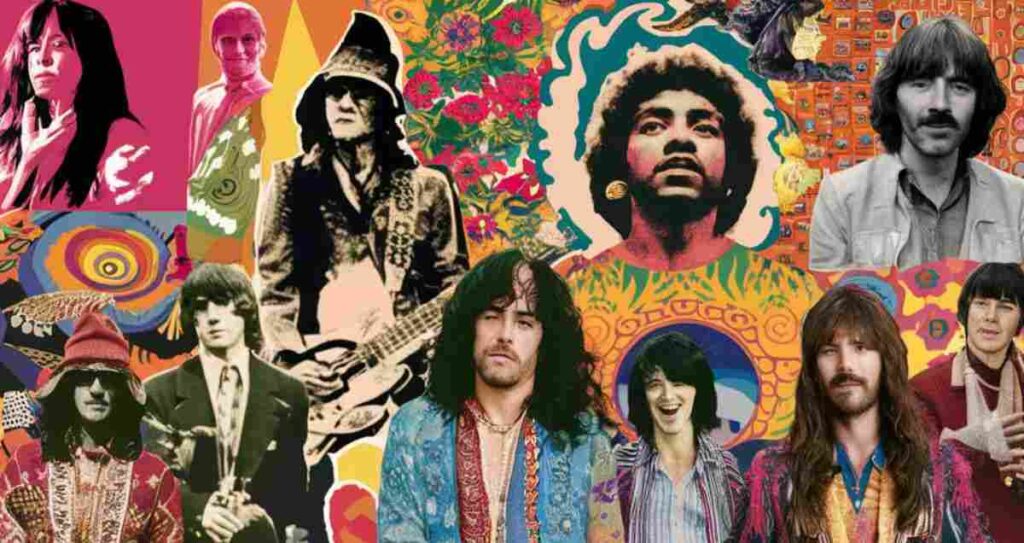The phrase What Cultures Wear Hippy Clothes explores the global influences behind hippy fashion. From Eastern European bohemian styles to African prints and Indian textiles, hippy attire reflects a fusion of traditional designs, free-spirited aesthetics, and sustainable craftsmanship.
Ever wondered how hippy fashion came to life? Discover the vibrant cultures that inspired tie-dye, flowing dresses, and handmade accessories in this global style journey!
Hippy clothes draw inspiration from diverse cultures worldwide. Eastern Europe contributed bohemian embroidery, while India added tie-dye and spiritual motifs. Native American patterns, African prints, and Asian silhouettes also influenced this eclectic style, making hippy fashion a global fusion of tradition and individuality.
Exploring the Origins: What Cultures Wear Hippy Clothes?

What Cultures Wear Hippy Clothes is more than just a style statement—it’s a cultural phenomenon deeply rooted in history, values, and global traditions. The vibrant colors, flowing fabrics, and eclectic accessories associated with hippy clothes tell stories of freedom, rebellion, and creativity.
But where did these iconic styles originate? In this guide, we’ll explore the cultures that have influenced hippy fashion, from the bohemian lifestyles of Europe to the traditional attire of Asia and Africa.
The Essence of Hippy Clothes
What Are Hippy Clothes?
Hippy clothes are characterized by their free-spirited and eclectic aesthetic, often incorporating:
- Natural fabrics like cotton, hemp, and linen.
- Flowy silhouettes, such as maxi dresses, wide-leg pants, and oversized tunics.
- Earthy tones and vibrant prints, including tie-dye, paisley, and floral patterns.
- Handmade elements, such as crochet, macramé, and patchwork.
- Accessories like beaded necklaces, feathered earrings, and braided headbands.
These garments embody the ideals of individuality, sustainability, and a deep connection to nature, values that are central to hippy culture.
What Cultures Wear Hippy Clothes?
What Cultures Wear Hippy Clothes didn’t emerge in isolation; it draws heavily from the traditions and styles of various cultures. Below, we delve into the key cultural influences:
Bohemian Influence from Eastern Europe
The term “bohemian” is synonymous with free-spirited fashion, and its roots trace back to the Romani people of Eastern Europe. Traditional Romani attire featured vibrant colors, layered skirts, and intricate embroidery—elements now seen in many hippy outfits.
- Key Features: Flowing skirts, floral motifs, and headscarves.
- Modern Adaptations: Boho-chic styles often incorporate lace blouses and fringed shawls inspired by this aesthetic.
Quote: “The Romani influence on hippy fashion is undeniable, with its emphasis on artistic freedom and individuality.”
Indian Textiles and Spiritual Aesthetics
During the 1960s, the hippy movement was heavily inspired by India’s rich culture. Western travelers visiting India brought back sari fabrics, block prints, and spiritual symbols, which became staples in hippy wardrobes.
- Iconic Elements: Tie-dye patterns, loose-fitting kurtas, and harem pants.
- Spiritual Touch: Symbols like the Om and mandalas, often incorporated into clothing and accessories.
Case Study: The Beatles’ 1968 visit to Rishikesh, India, played a pivotal role in popularizing Indian-inspired hippy fashion in the West.
Native American Patterns and Craftsmanship
The hippy movement often borrowed from Native American designs, which reflect a deep connection to the earth. Beaded jewelry, fringe details, and moccasins became key elements of hippy attire.
- Cultural Hallmarks: Geometric patterns, feathers, and earthy tones.
- Ethical Consideration: It’s important to respect the cultural significance of these designs and avoid cultural appropriation.
Fact: The use of fringe in hippy clothes originates from Native American ceremonial wear, symbolizing freedom and movement.
African Prints and Vibrant Colors
The bold, geometric patterns of African textiles, such as Ankara and Kente cloth, influenced the colorful side of hippy fashion. These fabrics, often handmade and dyed with natural materials, align with the movement’s emphasis on sustainability.
- Signature Looks: Dashikis, kaftans, and headwraps.
- Symbolism: Each pattern and color combination tells a story, often representing unity, heritage, or social status.
Asian Silhouettes and Fabrics
From Japanese kimonos to Chinese silk robes, Asian cultures brought a sense of elegance to hippy fashion. The relaxed fits and intricate designs of these garments resonated with the hippy ethos of comfort and beauty.
- Popular Items: Embroidered tunics, flowing robes, and wrap dresses.
- Fusion Trends: Modern hippy styles often blend Asian-inspired pieces with Western elements, creating a unique global aesthetic.
The Evolution of Hippy Fashion

Hippy Clothes in the 1960s and 70s
The counterculture movement of the 1960s and 70s embraced hippy fashion as a form of rebellion against societal norms. Festivals like Woodstock showcased:
- Tie-dye shirts as symbols of individuality.
- Maxi dresses for their comfort and style.
- Beaded jewelry handmade by artisans.
Table: Iconic Hippy Trends by Decade
| Decade | Key Trends | Cultural Influence |
|---|---|---|
| 1960s | Tie-dye, fringe, bell-bottoms | Native American, Indian |
| 1970s | Maxi dresses, patchwork, macramé | Bohemian, African |
| 1980s-90s | Vintage-inspired, floral prints | European Romani, Asian |
| 2000s-Present | Sustainable fabrics, boho-chic | Global fusion |
Ethical Considerations in Hippy Fashion
While celebrating cultural influences, it’s essential to respect their origins. Cultural appropriation—using elements of a culture without understanding or honoring their significance—can be harmful. Instead, support authentic artisans and learn about the history behind the styles you wear.
How to Incorporate Hippy Clothes into Your Wardrobe

- Start Small: Add a tie-dye scarf or a beaded necklace to your outfit.
- Focus on Comfort: Choose flowy silhouettes that allow for movement.
- Mix and Match: Pair hippy-inspired pieces with modern staples like jeans or blazers.
- Go Sustainable: Look for handmade or eco-friendly clothing to align with hippy values.
Conclusion
What Cultures Wear Hippy Clothes is a tapestry of global influences, weaving together traditions from Eastern Europe, India, Africa, Asia, and Native American cultures. By understanding the origins of hippy clothes, you can appreciate their beauty while honoring the stories they tell.
So, next time you wear a flowy maxi dress or a tie-dye shirt, remember—you’re not just making a style statement; you’re embracing a world of cultural heritage.
Welcome to FashionTrista! I’m David Mark, and I’m excited to share my passion for fashion with you. At FashionTrista, we offer a curated selection of the latest trends, style tips, and fashion advice to keep you ahead of the curve. Whether you’re looking for outfit inspiration or expert guidance, FashionTrista is your go-to resource for all things fashion. Explore with us and redefine your style journey.

